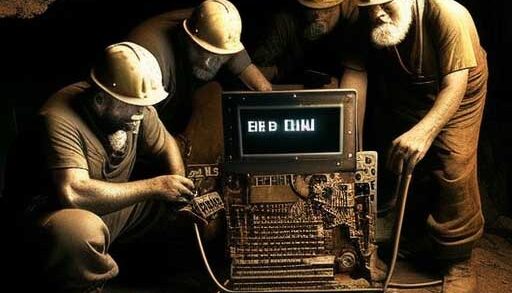What are the primary node types that exist?
Proof-of-Work and Proof-of-Stake are widely recognized consensus mechanisms, but newer methods are continuously emerging.
PoW-based blockchains have dominated the cryptocurrency landscape for an extended period, with Bitcoin and Ethereum both employing this model. Miners are responsible for securing the network and validating transactions, earning new coins as a reward.
However, PoW has been criticized for its energy consumption and environmental impact due to miners requiring significant computing power to solve arbitrary mathematical problems. As the industry has matured, more advanced hardware and increased electricity usage have been necessary.
Proof-of-Stake has emerged as a more eco-friendly approach, replacing miners with validators who have a financial interest in the network’s smooth functioning. Proponents claim that PoS can consume up to 99% less energy than PoW, but others fear it could lead to greater centralization and censorship. Ethereum is currently in the process of transitioning to PoS during The Merge, which is a high-stakes experiment.
Published Proof-of-Contribution, or PPoC, is a novel approach in which every participant plays a crucial role in ensuring decentralization, democracy, and effective governance of the ecosystem.
Article structure:
To what extent are these consensus mechanisms efficient?
There are several ways to evaluate the success of a blockchain, including gas fees, block confirmation times, and scalability.
Each of these three factors plays a critical role in determining a blockchain’s success. In Proof-of-Work blockchains, gas fees tend to rise during bull markets, making it more expensive for transactions to be processed promptly.
Traditionally, PoW blocks take up to 10 minutes to be finalized, but this can vary depending on mining difficulty. PoS, according to Ethereum, offers greater predictability and a fixed pace, with a validator randomly selected to create a new block every 12 seconds.
In both of these blockchains, there may be concerns that those with the most mining hardware or staked crypto may end up dominating block rewards. PPoC mechanisms address this by mining blocks every two seconds and rewarding each node equally. In principle, this implies that every participant is constantly incentivized for their contribution to the network.
Good to know: DeFi and Web3: Breathtaking features that you don’t know
What are the current obstacles to validating transactions?
Regardless of whether you are involved in PoW or PoS, the barriers to entry can be significant.
As previously mentioned, becoming a profitable Bitcoin miner is a challenging task. There is fierce competition from large farms with vast resources, and obtaining the latest equipment can be quite expensive. Furthermore, with the cost of electricity increasing in many areas of the world and block rewards halving every four years, there is a genuine risk that you could end up spending more money than you earn.
Proof-of-Stake presents a different set of obstacles. For instance, Ethereum’s new network requires validator nodes to stake 32 ETH. Given that this is worth tens of thousands of dollars, it is an investment that many typical consumers cannot afford. Additionally, these funds may be slashed if technical issues inadvertently cause you to act against the network’s best interests. While it is feasible to gain exposure to staking rewards for less, this entails putting your faith in centralized providers.
However, there may be other options. Some blockchain networks combine masternodes held by authorized organizations with validator nodes shared among all wallet users. Here, their interests are safeguarded by a node representative verified through the PPoC mechanism. The advantage here is that regular users will not have to worry about the technical complexities of maintaining a blockchain’s smooth operation, but they will still be incentivized to stake.
In what ways can PPoC be advantageous to regular users?
Using cryptocurrencies as an everyday payment method can be made more practical through the use of PPoC blockchains, beyond just staking.
One of the downsides of Proof-of-Work blockchains is the wait time for multiple confirmations before funds are received, which can be frustrating given the volatility of cryptocurrency. Additionally, guessing the right gas fee for urgent transactions can be difficult, leading to overpaying or underpaying.
PPoC blockchains, such as Eurus, address these issues by enabling confirmation of transactions within two seconds without having to consider miners’ threshold factors. They also offer the ability to complete cross-chain transactions and a block search engine that provides transparency.
How does Eurus operate precisely?
Eurus is a Layer 1 blockchain that utilizes sidechain technology and an interoperable bridge protocol to connect with Ethereum and other networks.
According to its founders, Eurus aims to provide faster cryptocurrency transactions and payments, enable major blockchains to communicate with each other, and address common issues associated with these networks, such as slow transaction speeds and high gas fees.
These efforts could be instrumental in overcoming obstacles to the widespread adoption of cryptocurrencies, while also offering an opportunity for the public to engage with a transparent and equitable community.


